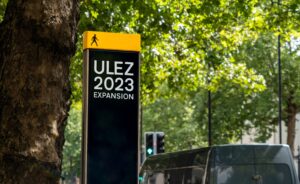Illegal gold mining in Peru has led to the highest levels of mercury ever recorded in the air.
An international team of researchers at the Los Amigos Biological Station have identified a worrying trend in one of the planet’s biodiversity hotspots.
Previous studies of mercury pollution have almost exclusively focused on water-based ecosystems. Now a report published in Nature Communications by Duke University has highlighted the devastating effects the material can have on flora and fauna found on land.
In one instance, an old-growth pristine forest was harbouring the highest levels of mercury ever measured – on a par with locations where mines are extracting the raw material itself. Birds in this area had an average of three, but up to 12 times more mercury in their systems compared to those from other parts of the rainforest. This has the potential to reduce their reproductive success by around 30%.
The so-called Peruvian gold rush is the root cause of the problem, which has seen illegal mining operations in the country’s Amazon increase significantly. Mercury binds to gold, forming pellets large enough to be caught in a sieve, and as such is regularly used in the process. If set alight, these pellets release mercury into the atmosphere, causing pollution.
“We found that mature Amazonian forests near gold mining are capturing huge volumes of atmospheric mercury, more than any other ecosystem previously studied in the entire world,” said Jacqueline Gerson, who completed the research for her Ph.D at Duke, and now has a postdoctoral research post at the University of California, Berkeley.
‘There’s a reason why people are mining. It’s an important livelihood, so the goal is not to get rid of mining completely, nor is it for people like us coming in from the United States to be the ones imposing solutions or determining what should happen,’ she added. ‘The goal is to highlight that the issues are far vaster than water pollution, and that we need to work with local communities to come up with ways for miners to have a sustainable livelihood and protect indigenous communities from being poisoned through air and water.’
In related news, Amazon forest fires are believed to have released more CO2 than the whole of the UK between 2015 and 2016, despite blazes only being evident in 1.2% of the rainforest. Meanwhile, last summer scientists at the University of York revealed forests in Africa store more carbon dioxide than the Amazon.
Image credit: Adam Smigielski

















Leave a Reply